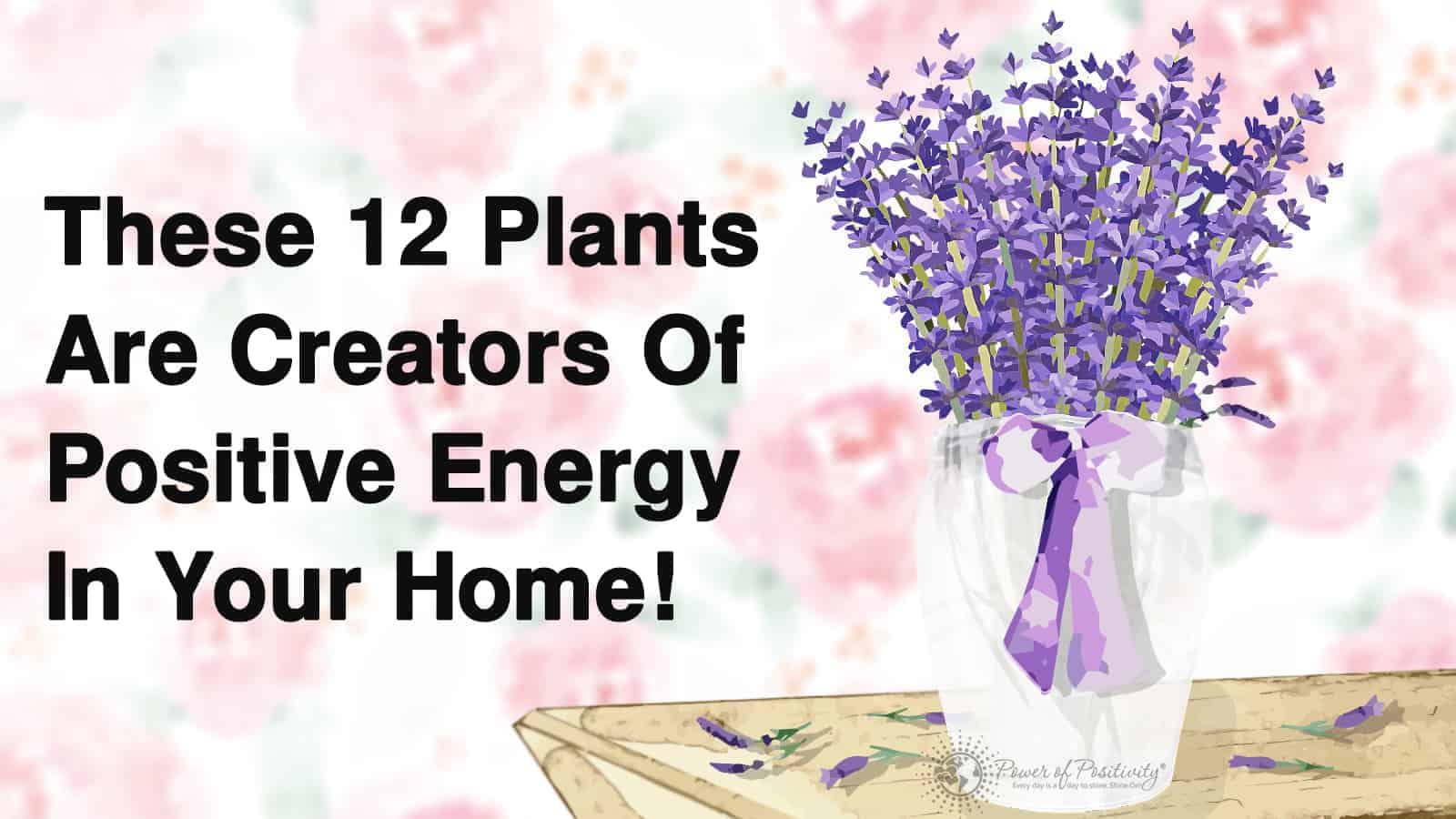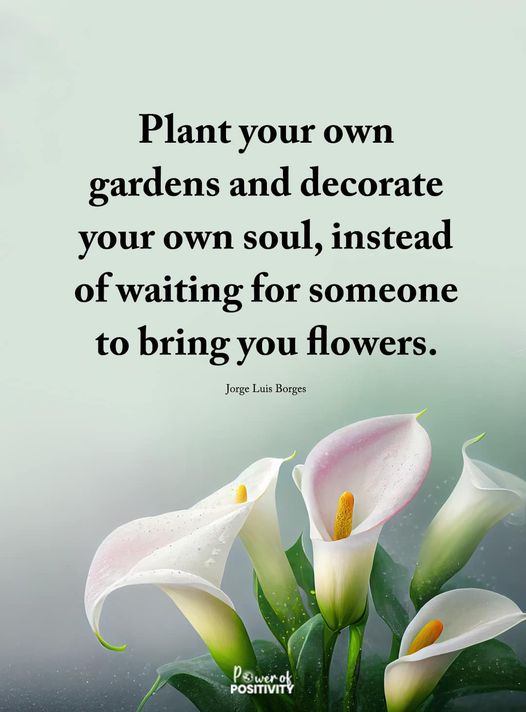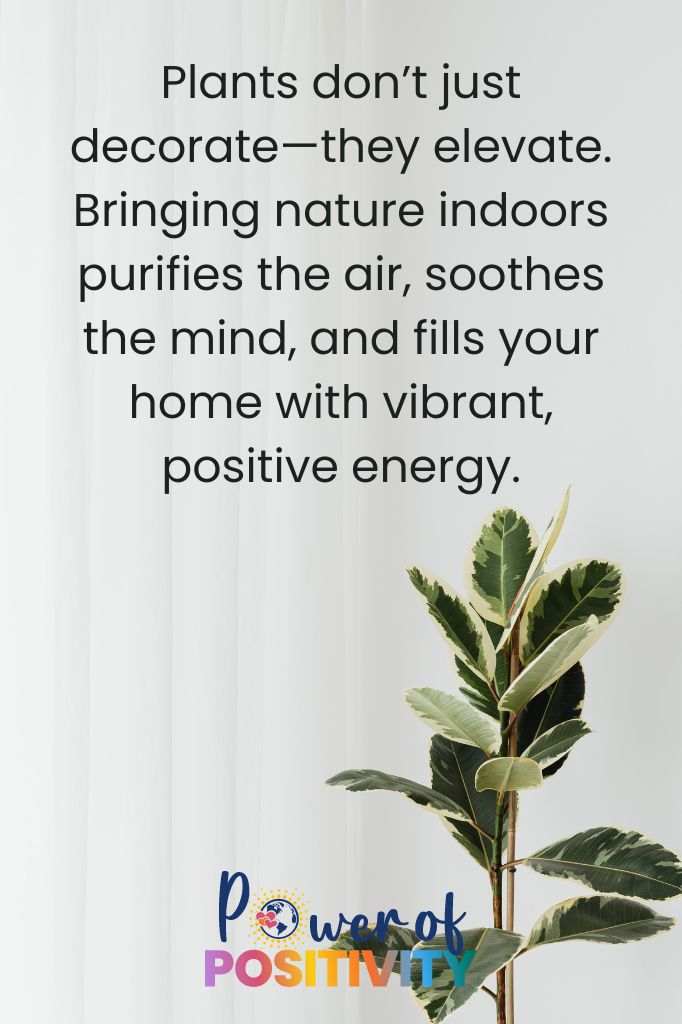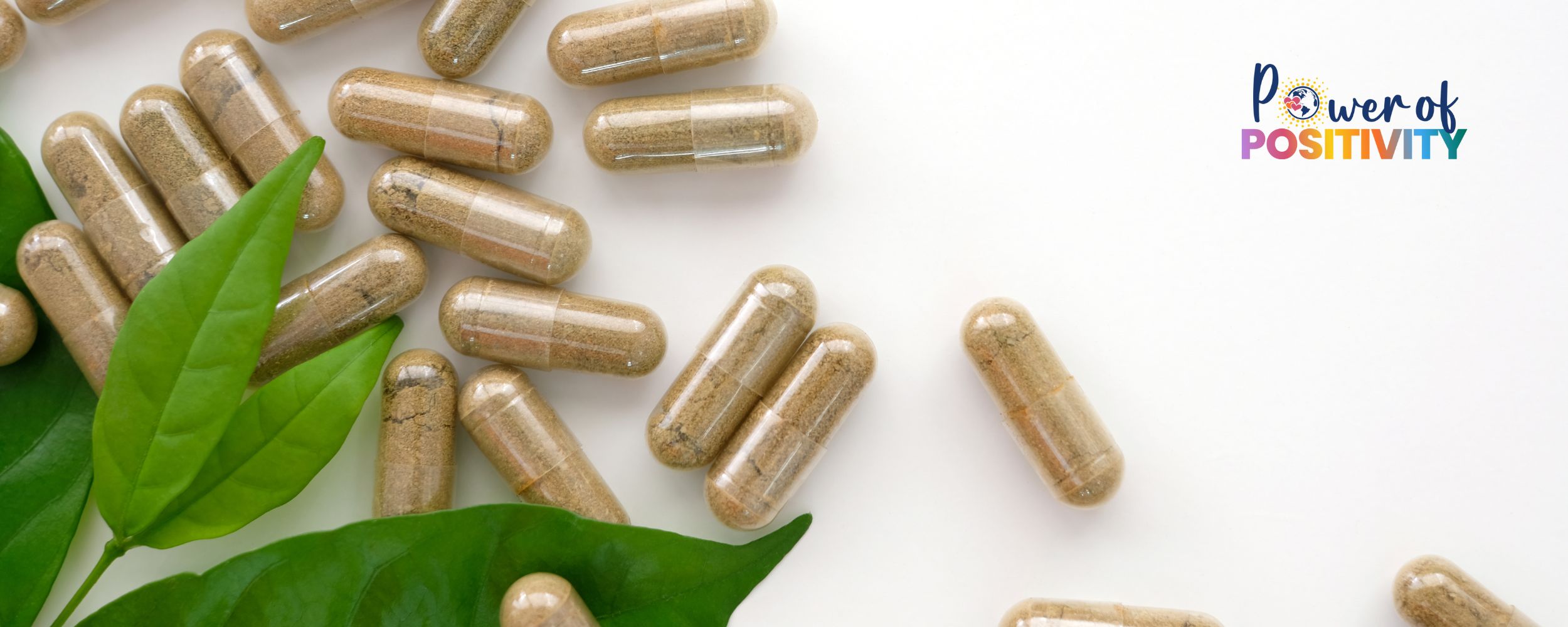You’ve likely felt it before—the subtle shift in energy when you walk into a space filled with lush greenery. Plants that create positive energy don’t just make your home look good; they truly transform the atmosphere, filling it with life and vitality.
But how exactly do they do it? It’s more than just their beauty. Certain plants have unique properties that enhance your mental and physical well-being while purifying the air. From calming your mind to helping you breathe easier, these green companions play a bigger role than you might think.
Curious about which plants can boost the positive vibes in your home? Let’s dive into the best houseplants that bring in good energy and see how they can improve your life—one leaf at a time.
How Do Plants Improve Our Mental and Physical Well-Being
Plants offer both scientific and energetic benefits that positively impact your mental and physical well-being. Research shows that having plants around can help reduce stress, lower anxiety, and boost your mood. Here’s how they do it:
- 🌿 Stress Reduction: Studies indicate that being around plants helps lower blood pressure, reduce anxiety, and promote relaxation. One study even found that simply having a view of plants can help lower stress levels and enhance feelings of calm.
- 💐 Mood Improvement: Plants like Lavender and Jasmine have been found to have a calming effect, improving mood and alleviating symptoms of depression. The scent of Lavender, for example, is known to reduce stress by decreasing heart rate and blood pressure.
- 🧠 Enhanced Cognitive Function: Having plants in your space can also improve focus and concentration. Whether in an office or study area, plants can boost cognitive function, improve reaction times, and even increase productivity.
- 🌱 Air Quality and Physical Health: Many indoor plants like Snake Plant and Peace Lily purify the air by removing toxins, which in turn contributes to better physical health. Clean air promotes a sense of well-being, helping reduce fatigue and headaches.
Incorporating plants into your daily life can enhance both mental and physical well-being, making them a simple yet powerful addition to any home or workspace.
The 12 Best Houseplants for Positive Energy
If you’re looking to fill your home with good vibes, choosing the right houseplants is key. Not only do these plants bring in positive energy, but they also have a calming effect and help purify the air around you.
Here are some of the top picks that do more than just sit pretty—they actively uplift your space and your spirit.
- Jasmine (Jasminum): Jasmine’s soothing aroma helps release stress, while its presence enhances your emotional energy, making it ideal for spaces where you relax or spend time with loved ones.
- Lavender (Lavandula): Its delicate purple flowers not only beautify a room but also promote relaxation, making it perfect for the bedroom or any space where you want to unwind.
- Aloe Vera (Aloe barbadensis): Aloe Vera is thought to drive away bad energy and misfortune, bringing peace and clarity into your space. Plus, it’s incredibly low-maintenance—perfect for beginners.
- Rosemary (Rosmarinus officinalis): It’s ideal for spaces where you want to keep the atmosphere light and energized, like your kitchen or living room. Its presence helps cleanse the air, making the space feel refreshed and inviting.
- Peace Lily (Spathiphyllum): With its calming and purifying properties, the Peace Lily promotes a sense of serenity and emotional balance, making it ideal for bedrooms and meditation spaces.
- Snake Plant (Sansevieria trifasciata): The Snake Plant is often considered a symbol of resilience and protection. Its ability to absorb negative energy makes it an ideal choice for any room, particularly in high-traffic areas where energy can become chaotic.
- Orchid (Orchidaceae): Orchids help balance energies and promote love, while their vibrant colors and elegant flowers uplift the spirit, making them a wonderful choice for enhancing positive vibes.
- Money Plant (Epipremnum aureum): According to Feng Shui, this plant brings good fortune and creates a flow of positive energy. It’s often placed near windows or electronics to balance the energy in those areas.
- Basil (Ocimum basilicum): Basil’s refreshing scent and its ability to clear toxins make it a great choice for kitchens or common areas. It’s also linked to attracting love, happiness, and overall positivity.
- English Ivy (Hedera helix): This plant is often associated with endurance and protection. It promotes harmony in the home, making it a great addition to areas where balance and peace are desired.
- Chrysanthemum (Chrysanthemum morifolium): These flowers are believed to promote happiness and peace, making them ideal for common areas like living rooms, where a cheerful and harmonious energy is needed.
- Areca Palm (Dypsis lutescens): Associated with peace and good fortune, the Areca Palm promotes tranquility and balance, especially in bedrooms or living rooms, where relaxation is key.
How to Use Plants to Boost Positive Energy in Every Room
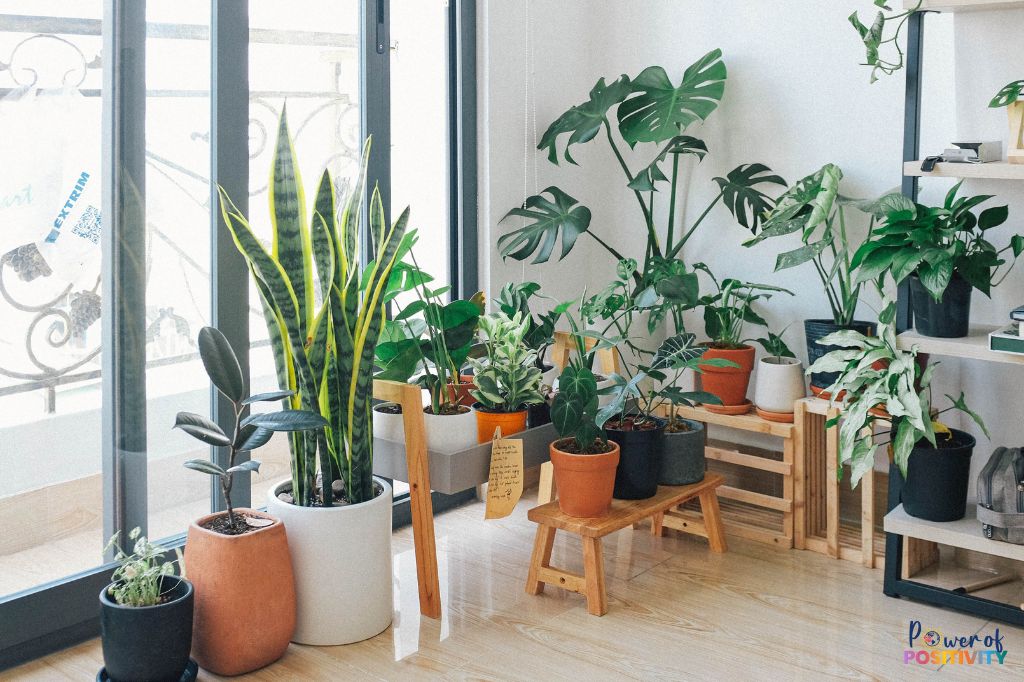
The placement of your plants is just as important as the plants themselves. Where you position them can significantly influence the energy flow in your home.
Let’s take a look at which plants work best in different rooms to promote positive energy.
Bedroom: Calming Vibes for Rest
The bedroom should be a haven of relaxation. Plants that reduce stress and encourage peaceful sleep are ideal here.
- Lavender: Its soothing scent helps reduce anxiety and promotes restful sleep.
- Orchid: Releasing oxygen at night, it’s great for improving the air while you sleep.
- Jasmine: Enhances relationships and creates a calming atmosphere.
Living Room: Energizing and Welcoming
The living room is a social space, and plants here should purify the air and energize the space.
- Snake Plant: Known for its air-purifying qualities and ability to absorb negative energy.
- Money Plant: A symbol of prosperity, it boosts energy related to wealth, especially when placed in the southeast corner (Feng Shui).
- Peace Lily: Helps keep the air fresh and promotes a peaceful environment.
Kitchen: Cleansing Energy for Vitality
The kitchen is where health and nourishment begin, so choose plants that promote freshness and positivity.
- Basil: Attracts love and happiness while purifying the air.
- Rosemary: Reduces stress and adds calming energy.
- Aloe Vera: A healing plant that removes toxins, perfect for balancing the energy.
Home Office: Focus and Creativity
To stay productive and focused, your office needs plants that foster concentration and reduce stress.
- Orchid: Encourages creativity and focus.
- Snake Plant: Cleans the air and provides mental clarity.
- Rosemary: Stimulates focus and sharpens memory.
Bathroom: Fresh and Purifying Energy
Even the bathroom benefits from positive energy, with plants that thrive in humid environments.
- Aloe Vera: Its healing energy and love for humidity make it ideal.
- English Ivy: Purifies the air by absorbing mold and toxins.
- Bamboo: Promotes balance and positive energy, thriving in moisture.
Can Adding Plants to Your Home Really Change Its Energy?
Adding plants to your home can profoundly impact its energy by improving both the physical and emotional atmosphere. Plants are known to purify the air, removing toxins like formaldehyde and benzene, which can enhance indoor air quality and make your space feel fresher and more vibrant.
Over time, the presence of greenery has been linked to reduced stress and anxiety levels, making your home a more calming and peaceful environment. The natural beauty and vibrant energy of plants uplift your mood, promoting a sense of well-being and harmony.
Beyond just their presence, caring for plants and placing them correctly is essential for sustaining these positive effects. In Feng Shui, the placement of plants like the Money Tree or Snake Plant in wealth or health corners can enhance the flow of good energy, promoting prosperity and well-being.
Consistent care, such as providing the right amount of sunlight and water, ensures that plants thrive and continue to bring these benefits into your home for years to come. The connection between nurturing plants and creating a positive living environment is both long-lasting and deeply rewarding.
FAQs
Can Plants Really Remove Negative Energy from a Space?
Yes, many plants are believed to absorb negative energy and promote a positive environment. Aloe Vera, for example, is thought to absorb negativity and bring good fortune.
Snake Plants are also known for their ability to purify the air and reduce negative energy in a room. Maintaining these plants in key areas of your home can create a calming and harmonious atmosphere.
What Plants Are Best for Improving Sleep?
Certain plants, like Lavender and Jasmine, are particularly effective for promoting restful sleep. Lavender’s calming scent helps reduce anxiety and stress, while Jasmine enhances relaxation and has been shown to improve sleep quality. Placing these plants in your bedroom can help you unwind and create a peaceful environment for better sleep.
Which Plants Are Good for Office Spaces to Boost Productivity?
Plants like the Snake Plant and Peace Lily are great for office environments. They help purify the air and improve focus by reducing stress and boosting mood. Additionally, Lucky Bamboo is commonly used in Feng Shui to promote success and wealth, making it a great addition to any workspace.
Final Thoughts
Plants do more than just sit there—they transform your home’s energy, reduce stress, and even improve air quality.
Whether it’s a calming Lavender by your bed or a bold Snake Plant in the living room, these green companions bring life and positivity to every corner.
Remember, taking care of them means they’ll take care of you. So, add a little greenery, and let the good vibes grow.
Ready to plant some positivity? Your home is calling!


